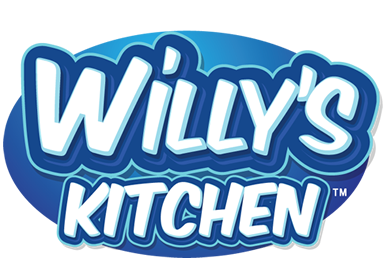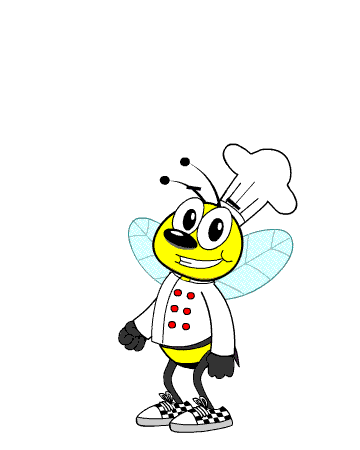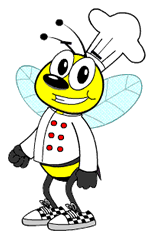WHAT’S ON YOUR PLATE?
When you’re thinking about what to serve at mealtime, the MyPlate diagram put out by the USDA (the U.S. Department of Agriculture) just made your life a little easier! It’s designed to help you feed your family the right amount of the right food. As First Lady Michelle Obama said, “Parents don’t have the time to measure out exactly three ounces of chicken or to look up how much rice or broccoli is in a serving. … But we do have time to take a look at our kids’ plates. … And as long as they’re eating proper portions, as long as half of their meal is fruits and vegetables alongside their lean proteins, whole grains and low-fat dairy, then we’re good. It’s as simple as that.”

The portions measure out to 25% grains, 25% protein, and on the other side it’s 30% vegetables and 20% fruit. And don’t forget the blue dairy circle. Does this have to be at every meal? NOPE! But it’s the ratio you want to see in what your child eats during a day. And you, too! It’s meant for all of us.
This picture doesn’t tell you how big the plate should be, but it’s a good idea to use one that’s no more than 8 or 9 inches across. If it’s larger than that you might be tempted to pile on more food. Then even if the proportions are correct, you’re going to eat too much. So no cheating please by using plates which are twice the size as normal! xxxxxx
If you just serve foods that roughly fall into these categories you’ll be off to a good start, but you’re off to the BEST start if you serve the foods that are the healthiest.
 Protein-rich foods include poultry, beef and seafood. The lower the fat content, the better. If you can, don’t serve red meat too often. According to the Harvard Medical School, eating even small quantities of it on a regular basis raises the risk of heart disease, type 2 diabetes, colon cancer and weight gain. And try to avoid processed meats because they’re loaded with sodium. Other good sources of protein are eggs, nuts and seeds, as well as tofu and veggie burgers and dry beans and peas. There’s a lot to choose from!
Protein-rich foods include poultry, beef and seafood. The lower the fat content, the better. If you can, don’t serve red meat too often. According to the Harvard Medical School, eating even small quantities of it on a regular basis raises the risk of heart disease, type 2 diabetes, colon cancer and weight gain. And try to avoid processed meats because they’re loaded with sodium. Other good sources of protein are eggs, nuts and seeds, as well as tofu and veggie burgers and dry beans and peas. There’s a lot to choose from!
Grains should ideally be whole grains. Think about oatmeal and brown rice and whole wheat bread. Even corn on the cob or popcorn count! And did you know that whole grains help you feel full?
 Fruits can easily be served at any meal, or as a snack.Eat every color you can think of, like red and green apples, purple and green grapes, pink and white grapefruit, blueberries and raspberries, strawberries and all of those yummy melons. And remember that you can serve them as smoothies! Some people say you should eat a rainbow of them! What a happy idea!
Fruits can easily be served at any meal, or as a snack.Eat every color you can think of, like red and green apples, purple and green grapes, pink and white grapefruit, blueberries and raspberries, strawberries and all of those yummy melons. And remember that you can serve them as smoothies! Some people say you should eat a rainbow of them! What a happy idea!
Vegetables don’t have to be scary. And even though you might want to count French fries or potatoes, please don’t. They’re full of quickly digested starch, which will have the same effect on your mood and blood sugar as sugar does. Most kids love carrots. That’s a good place to start.You can serve almost all vegetables either raw or cooked. Try roasting instead of boiling. This will keep lots of flavor and nutrition in your vegetables and they stay crunchy.
 Dairy can be milk or yogurt or cheese, and low-fat or no fat is preferred, especially for children over two. Calcium-fortified soy milk is also included in the dairy group. Your body will appreciate that calcium, especially as you get older. And dairy products are also important sources of vitamin D and protein. Vitamin D helps the body absorb calcium and uses it for healthy bones and teeth.And don’t forget to drink some water, too! Hydration is important.
Dairy can be milk or yogurt or cheese, and low-fat or no fat is preferred, especially for children over two. Calcium-fortified soy milk is also included in the dairy group. Your body will appreciate that calcium, especially as you get older. And dairy products are also important sources of vitamin D and protein. Vitamin D helps the body absorb calcium and uses it for healthy bones and teeth.And don’t forget to drink some water, too! Hydration is important.
Where does the oil go on this plate? You’re advised to use such a small amount of it, that it didn’t make it to the picture. Oils do provide important nutrients and are recommended, but dietary guidelines say to limit oils, solid fats (things like butter and cream and margarine and lard and shortening), and foods with added sugars. These foods provide what are considered empty calories and have little or no nutritional value.
What else is missing from this plate? Sweets, treats and desserts that EVERYBODY wants. You’re allowed to be a little sneaky here. Fruits and yogurt with some nuts on top? Yums! Baked apples? Oooh! Fruit popsicles made with real fruit juice? Sure! Cheesecake made with cottage cheese, oatmeal cookies, frozen grapes? Enjoy! The web is alive with recipes and pictures and most of them are so very easy to create. If you find something terrific that you like, share it with us and perhaps we can make it for you.

Remember that eating shouldn’t only be nutritious and healthy. It should be fun! Ask for suggestions from family members. Your plate might not always look like the USDA one, but if you get the recommended foods in every day, you can splurge once in a while on something else. And if you put on your thinking cap, you’ll find a way to makes those other foods healthier, too.
The GREAT news is that if you have one of those picky eaters in your house who doesn’t like food to “touch” other food, this plate is going to put them in heaven. “This goes here and that goes there”… what could be better?
Written by Holly White for WILLY’S KITCHEN






